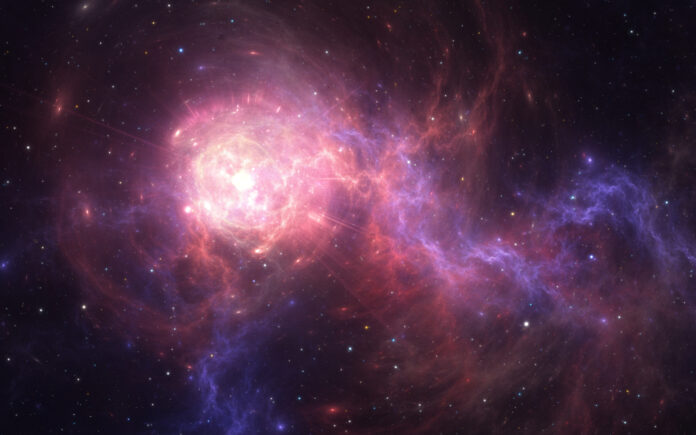The expansion of our universe is accelerating. Perhaps it’s some mysterious form of dark energy, but last year researchers put forth the radical idea that the accelerated expansion is due to our universe absorbing adjacent baby universes. More recent research has shown that while the idea still might work, it’s much more complicated.
Astronomers first discovered dark energy in 1998, when two independent teams found that distant supernovae were far dimmer than they should be, implying that the expansion of the universe was accelerating. Since then, many other lines of evidence have led to the same conclusion, but the ultimate cause of the accelerated expansion remains a mystery.
Dark Energy Is a Cosmological Constant
The simplest explanation for dark energy – the name given to the accelerated expansion – is what’s known as a cosmological constant. An idea first introduced by Albert Einstein, the equations of general relativity allow us to add simple constants. In essence, in this view the expansion of the universe accelerates because there is a baked-in acceleration.
While simple, as scientific theories go it’s not exactly satisfying. It’s like saying that dark energy exists because…it exists. But physicists have struggled to come up with better ideas, and the problem has been exacerbated recently with the emergence of the so-called Hubble tension, where different measures of the present-day expansion rate are giving significantly different results.
Read More: What’s the Difference Between Dark Matter and Dark Energy?
Are We Merging with Baby Universes?
Last year, a pair of astronomers proposed a new idea: perhaps the accelerated expansion wasn’t due to a cosmological constant or some exotic physical process. Instead, our universe might be expanding at a relatively sedated rate. But maybe our universe isn’t alone, and we are surrounded by smaller baby universes.
As our universe expands, we absorb our neighbor baby universes, which make the volume of our universe suddenly jump – giving the appearance of accelerated expansion.
While the initial idea seemed promising, it had only been tested against a limited number of observations. Most recently, astronomers at McGill University took a closer look and put the baby universe idea to the real test. They compared the predictions of this model against data from the Planck satellite measurements of the cosmic microwave background, the DESI galaxy survey, and supernovae datasets. They reported their results in a paper appearing in the journal preprint server arXiv.
These astronomers found that the simple baby universe concept couldn’t match all the available data. But they did find that there might be a middle ground, where the universe still merges with baby neighbors but also maintains a little bit of cosmological constant.
Read More: Is the Multiverse Theory Science Fiction or Science Fact?
What the Future Holds for Dark Energy Theories
While at first this new result didn’t seem like much of an advance – after all, we would still have to understand the origins of the remaining cosmological constant, plus we would have our work cut out for us in explaining how these baby universes exist and how the merger process unfolds.
But the combination of cosmological constant and baby universes can match the data better than a scenario where baby universes don’t exist, and the scenario involving both a small cosmological constant and merging can relieve a big chunk of the Hubble tension.
It’s unlikely that our universe is actually merging with baby neighbors. Yes, it can provide a better fit to the data, but it’s a much, much more complex model.
Still, ideas like these are critical. Astronomers are stumped when it comes to explaining the origins of dark energy and the problem of the Hubble tension. We need creative, out-of-the-box (or even out of the universe) ideas to crack the riddle. The more ideas we have percolating and pushing against the data, the more we may find the path to a solution.
Read More: Some Scientists Are Skeptical Dark Energy Even Exists
Article Sources
Our writers at Discovermagazine.com use peer-reviewed studies and high-quality sources for our articles, and our editors review for scientific accuracy and editorial standards. Review the sources used below for this article:
Paul M. Sutter is a theoretical cosmologist, NASA advisor, host of the “Ask a Spaceman” podcast, and a U.S. Cultural Ambassador. He is the author of Your Place in the Universe and How to Die in Space.
Source : Discovermagazine










